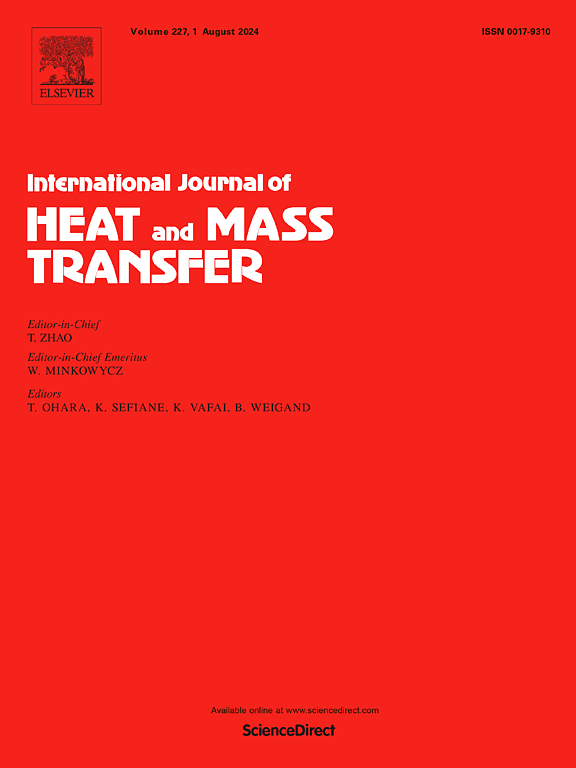Boiling performance enhancement and self-recovery of nucleate boiling regime on micro- and nanostructured porous surfaces
IF 5
2区 工程技术
Q1 ENGINEERING, MECHANICAL
International Journal of Heat and Mass Transfer
Pub Date : 2024-12-02
DOI:10.1016/j.ijheatmasstransfer.2024.126516
引用次数: 0
Abstract
In this paper, we report the pool boiling experimental results for significant enhancements in the boiling heat transfer coefficient (BHTC) and CHF on various microporous surfaces. The microporous surfaces were fabricated by metal (Copper) powder sintering process, and nanostructured porous surfaces were additionally fabricated through the thermal oxidation of the metal porous surfaces. Among the examined substrates, a boiling surface with a thin metal porous layer and millimeter-sized porous pillar structures exhibited optimal boiling performance; the BHTC and CHF of the microporous surface were measured to be approximately 500 % and 270 % higher than those of a smooth reference surface, respectively. We conjecture that the results come from the combined effect of active nucleation site density enhancement, capillary wicking promotion, and separation of liquid-vapor flow paths on the microporous surface with porous pillars. On the other hands, the porous pillar surface with needle-like nanostructures showed the interesting phenomena that can be regarded to the recovery of the boiling regime from transition boiling to nucleate boiling. At the CHF, the temperature increase on the surface was slower than that on the other surfaces. Additionally, at high heat fluxes below the CHF, the overheated surface self-recovered to the nucleate boiling state, indicating the rewetting of local dry spots. We consider that the capillary wicking capability strongly improved by the nanostructures on the surface was presumably responsible for inhibiting the irreversible expansion of local dry spots. From the experimental observations throughout this study, we propose the following key requirements to design an ideal boiling surface: increasing the nucleation site density, ensuring a liquid supply path by capillary wicking, separating the liquid and vapor flow paths, and improving the liquid wettability of the solid surface by forming nanostructures.
求助全文
约1分钟内获得全文
求助全文
来源期刊
CiteScore
10.30
自引率
13.50%
发文量
1319
审稿时长
41 days
期刊介绍:
International Journal of Heat and Mass Transfer is the vehicle for the exchange of basic ideas in heat and mass transfer between research workers and engineers throughout the world. It focuses on both analytical and experimental research, with an emphasis on contributions which increase the basic understanding of transfer processes and their application to engineering problems.
Topics include:
-New methods of measuring and/or correlating transport-property data
-Energy engineering
-Environmental applications of heat and/or mass transfer

 求助内容:
求助内容: 应助结果提醒方式:
应助结果提醒方式:


